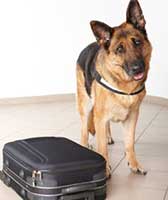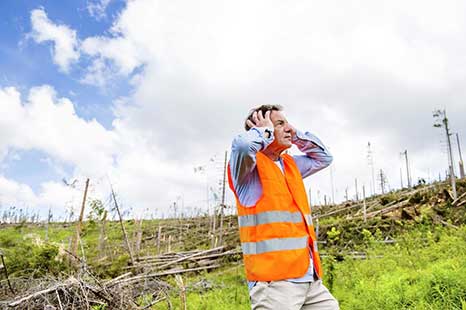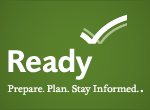Coping with a Disaster or Traumatic Event
Emergency Responders: Tips for taking care of yourself
Responding to disasters is both rewarding and challenging work. Sources of stress for emergency responders may include witnessing human suffering, risk of personal harm, intense workloads, life-and-death decisions, and separation from family. Stress prevention and management is critical for responders to stay well and to continue to help in the situation. There are important steps responders should take before, during, and after an event. To take care of others, responders must be feeling well and thinking clearly.
See the SAMHSA tip sheet, Tips for Disaster Responders: Preventing and Managing Stress
Here are some important steps responders can take to ensure they are able to do their job and cope with challenging situations:
Preparing for a Response:

Make plans for your household, childcare, and pet care needs if you will be away from home.
- Try to learn as much as possible about what your role would be in a response.
- If you will be traveling or working long hours during a response, explain this to loved ones who may want to contact you. Come up with ways you may be able to communicate with them. Keep their expectations realistic and take the pressure off of yourself.
- Make a plan for ongoing family and home needs like child care and pet care if you will be away from home for an extended time.
- Talk to your supervisor and establish a plan for who will fill any urgent ongoing work duties unrelated to the disaster while you are engaged in the response.
During a Response: Understand and Identify Burnout and Secondary Traumatic Stress

Limit your time working alone by trying to work in teams.
Responders experience stress during a crisis. When stress builds up it can cause:
- Burnout – feelings of extreme exhaustion and being overwhelmed.
- Secondary traumatic stress – stress reactions and symptoms resulting from exposure to another individual’s traumatic experiences, rather than from exposure directly to a traumatic event.
Coping techniques like taking breaks, eating healthy foods, exercising, and using the buddy system can help prevent and reduce burnout and secondary traumatic stress. Recognize the signs of both of these conditions in yourself and other responders to be sure those who need a break or need help can address these needs.
- Signs Of Burnout:
- Sadness, depression, or apathy
- Easily frustrated
- Blaming of others, irritability
- Lacking feelings, indifferent
- Isolation or disconnection from others
- Poor self-care (hygiene)
- Tired, exhausted or overwhelmed
- Feeling like:
- – A failure
- – Nothing you can do will help
- – You are not doing your job well
- – You need alcohol/other drugs to cope
- Signs of Secondary Traumatic Stress
- Excessively worry or fear about something bad happening
- Easily startled, or “on guard” all of the time
- Physical signs of stress (e.g. racing heart)
- Nightmares or recurrent thoughts about the traumatic situation
- The feeling that others’ trauma is yours
Get support from team members: Develop a Buddy System
In a buddy system two responders partner together to support each other, and monitor each other’s stress, workload, and safety.
Here are some ways to work with your buddy:
- Get to know each other. Talk about background, interests, hobbies, and family. Identify each other’s strengths and weaknesses.
- Keep an eye on each other. Try to work in the same location if you can.
- Set up times to check-in with each other. Listen carefully and share experiences and feelings.
- Offer to help with basic needs such as sharing supplies and transportation.
- Monitor each other’s workloads. Encourage each other to take breaks.
- Communicate your buddy’s basic needs and limits to leadership – make your buddy feel “safe” to speak up.
- Share opportunities for stress relief (rest, routine sleep, exercise, and deep breathing).
- Acknowledge tough situations and recognize accomplishments, even small ones.
For more information on the buddy system: https://www.cdc.gov/vhf/ebola/pdf/buddy-system.pdf
Responder Self-Care Techniques
- Try to limit working hours to no longer than 12-hour shifts.
- Work in teams and limit amount of time working alone.
- Write in a journal.
- Talk to family, friends, supervisors, and teammates about your feelings and experiences.
- Practice breathing and relaxation techniques.
- Maintain a healthy diet and get adequate sleep and exercise.
- Know that it is okay to draw boundaries and say “no.”
- Avoid or limit caffeine and use of alcohol or drugs.
It is important to remind yourself:
- It is not selfish to take breaks.
- The needs of survivors are not more important than your own needs and well-being.
- Working all of the time does not mean you will make your best contribution.
- There are other people who can help in the response.

Responders will experience stress. Managing stress and taking breaks will make you a better responder.
After the response: Family and Work-life
Tips for Families of Returning Disaster Responders: Adjusting to Life At Home—
This tip sheet is intended to assist families in reuniting with a family member who is returning from an emergency or disaster response assignment. It offers advice on adjustment to home life, basic post-deployment needs, possible redeployment concerns, signs of stress, and when to seek help.
http://store.samhsa.gov/product/Adjusting-to-Life-at-Home/SMA14-4872
Tips for Disaster Responders: Returning to Work
http://store.samhsa.gov/shin/content//SMA14-4870/SMA14-4870.pdf
Additional Resources:

Family members can help make the transition easier after the response is over.
- Page last reviewed: March 8, 2016
- Page last updated: November 7, 2017
- Content source:
- Maintained By:





 ShareCompartir
ShareCompartir